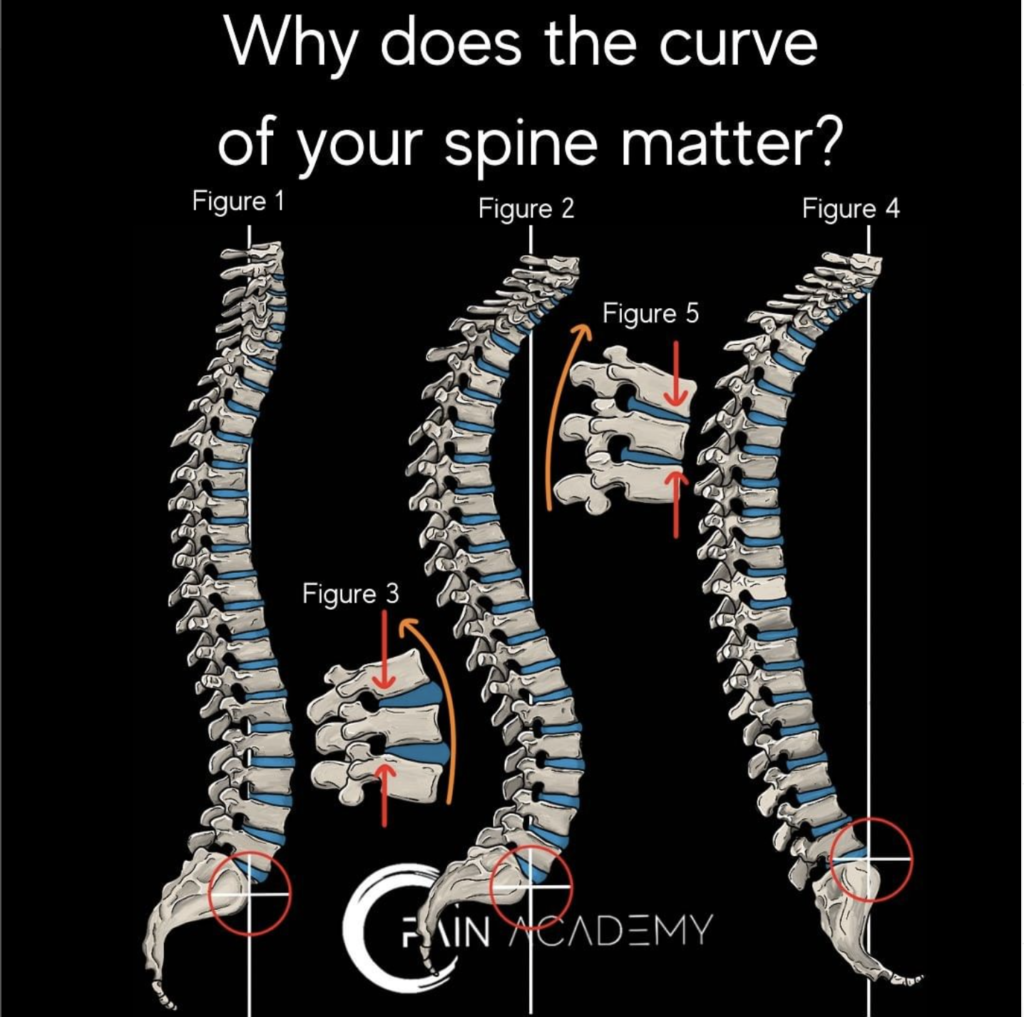
The main reason is where force/compression occurs on the discs.
A spine with balanced curves (figure 1.) evenly distributes compressive forces across the entire surface of the disc.
Too much curvature (Fig 2 and 3), or a loss of proper curvature (Fig 4 and 5), places excessive force on either the front or back of the discs. This acute pressure leads to disc degeneration, prolapse, and then extrusion of the jelly within each disc.
Said differently, the curvature of your spine dictates where pressure is placed on the discs. Too much or not enough curvature damages the discs causing back pain.
It’s pretty straightforward. What isn’t straightforward though is WHY the curves have been compromised.
The curve of the spine is often a reflection of how the ankles, knees, hips, and shoulders function. When there is an imbalance within the major muscle groups of those joints, the spine’s curvature will be affected negatively.
Back pain makes most people believe their back is the problem when in reality the spine is just reacting to the poor function of the body surrounding it.
For most people, back pain is a reaction to problems elsewhere in the body. Our spine requires crucial function and range of motion of the ankles, knees, hips, and shoulders. When joint motion is limited or dysfunction is present in any of those joints, our malleable spine will start to change shape to keep us moving as long as possible.
Although the spine’s ability to change shape is a great adaptation short term, long term it puts most of us at a high risk of injury and chronic back pain.
Most of the before/after photos featured on this account show the spine changing, yet we don’t focus on the spine to get those changes. The majority of the exercises in our program restore movement and function to the entire body around the spine. By improving how the entire body moves, the proper curvature of the spine can be restored.
If you are having issues with your back, the next best step to take is to look at how your entire body moves.
Click here to get started with our Pain Assessment Toolkit and see for yourself how your entire body is creating those back problems.